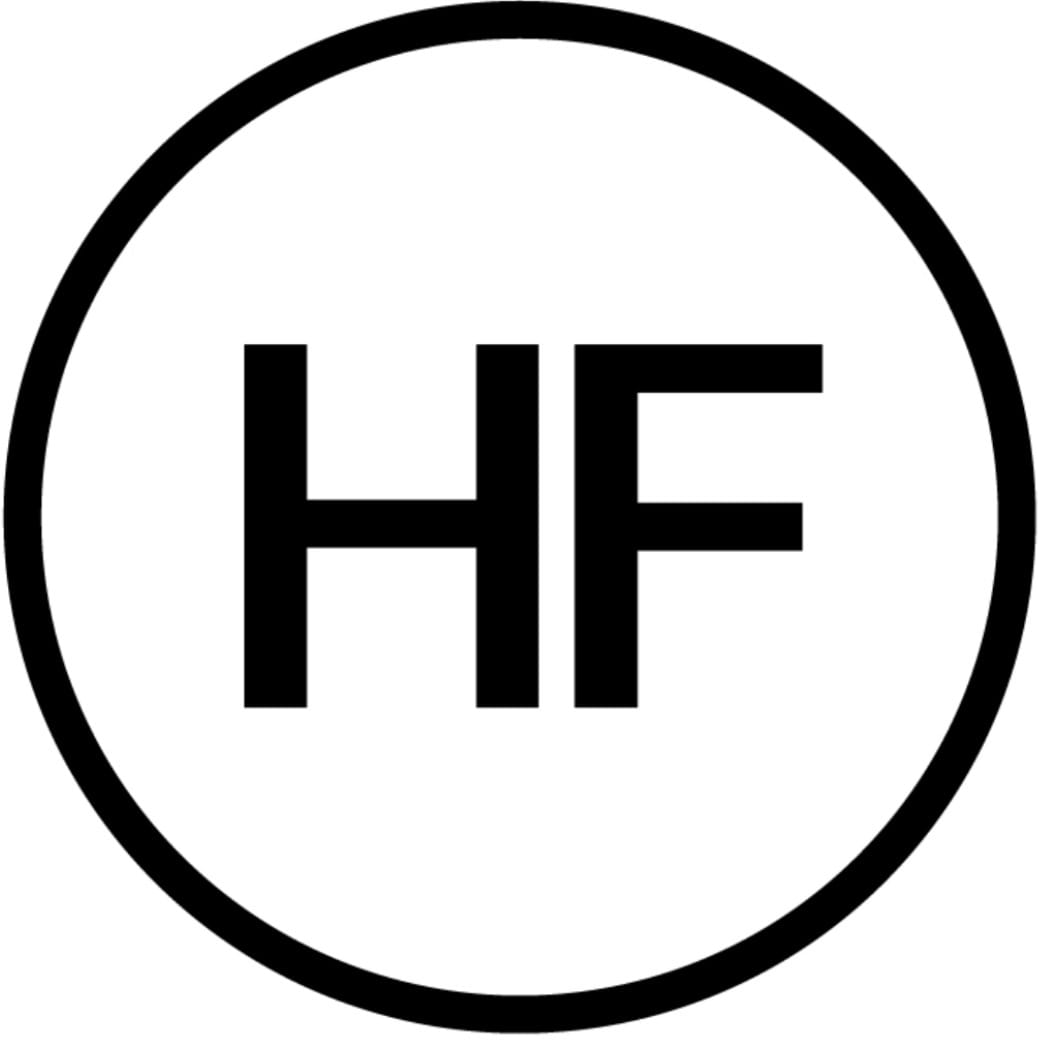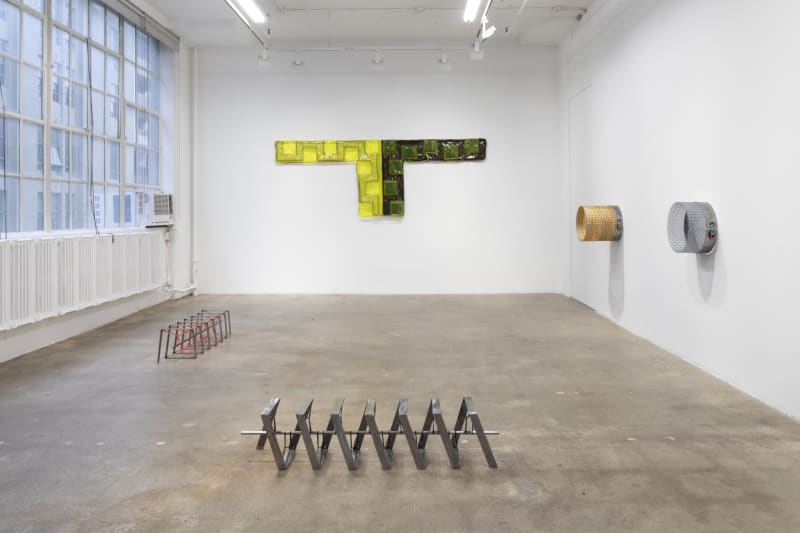“Repetition changes nothing in the object repeated, but does change something in the mind which contemplates it." - David Hume via Gilles Deleuze, Difference and Repetition
HESSE FLATOW is pleased to present Circles with Sharp Corners, Alina Tenser’s third solo exhibition with the gallery. Working across sculpture, video, and performance, Tenser’s works propose possibilities for physical activation, play, and transference. Influenced by histories of conceptualism and postminimalism, Tenser’s practice interrogates form and movement through frameworks of autobiography, psychoanalysis and the quotidian.
For Circles with Sharp Corners, Tenser presents a video installation alongside sculptures made with steel, vinyl, ribbon, and rubber bands, among other materials. The video, Walking in Circles with Sharp Corners, is shot from a first-person, vertical perspective. We see the artist’s legs walking forward through a shallow metal tray filled with water, turning corner after corner. A large ball bearing rushes around the figure’s feet, along with intersecting currents of water. After watching for a minute or two, it becomes clear that the tray is a relatively small rectangle, and that the artist is walking in circles. There’s a tension proposed – particularly via the video’s title – between the circular movement of the body and the hard-edged form of the tray. Recalling Richard Long’s seminal work A Line Made by Walking (1967), it seems as though Tenser’s movements might influence the shape of the container over time. But, while Long uses the act of walking to make a sculpture/photograph that indexes a past activity, Tenser uses the video form to capture her present repetitive effort. The potential for the artist to modulate the shape of the tray loops continuously.
In one conversation, Tenser mentioned that walking through shallow water reminds her of the way she used to do laundry as a child–walking over clothes in the soapy, shallow water of the bathtub. In this memory, the act of walking produced an action on the substrate – cleaning the clothes underfoot. Memories of these types of repetitive, quotidian behaviors carry a certain repression from consciousness, and are often elicited most strongly through their present repetition.
In the sculptural series Water Carriers, three shallow trays resembling the one in the video are positioned around the gallery. Each one is bilaterally symmetric, hinging in the center. A vinyl hose runs through the wall of each tray at two points, proposing an entry and exit point for fluids to circulate through. The tension between the body and the metal tray in the video is collapsed in this series, where the trays become body-like, with orifices and gestures of their own. Tenser has talked about her practice as spanning the diagrammatic and the embodied. These two modes come to describe perspective, distance, and the position one looks from. While the tray in the video is seen from above, flattened through vertical perspective into a kind of path or track that the artist is both following and attempting to modulate, the Water Carriers are dimensional, taking up the space and presence of a figure.
Another sculptural series, Corridors, comprises expanded steel cylinders installed at abdomen height on the wall, including three that suggest a through line between the two rooms. The steel forms—with satin ribbon woven through them—are locked into thick metal docks with industrial closures. Like the ephemeral path traced by the artist in the water filled trays, the elements of Corridors suggest an immaterial path throughout the space. The circular footprint of the steel cylinders echoes the circular path taken in the video piece.
When I asked Tenser if there was some kind of desire, or fantasy, motivating her repetitive walk in the video piece, she said no. Instead, she said, the effort becomes a kind of meditation. She brought up the classic problem in geometry of “Squaring the Circle,” wherein one attempts to draw a square with the same area as a given circle, in a finite number of steps. This problem was shown to be impossible to solve in 1882 when pi was proven to be a transcendental number, but people still attempt it. Like the problem, the video suggests a possibility of the mutability of form, without documenting its realization. The gesture’s signification then becomes circular, returning to itself over and over. – Marina Caron
This exhibition was made possible by a generous Faculty Research Grant for Lehigh University, and will coincide with Tenser’s institutional solo exhibition Wrk Frm Hm, on view at KinoSaito Art Center in Verplanck, NY from March 9 through May 5, 2024.


